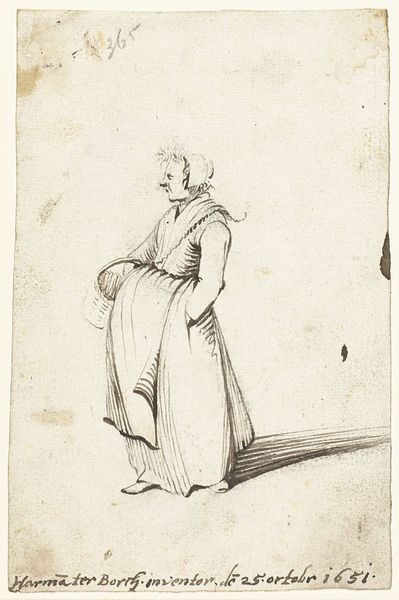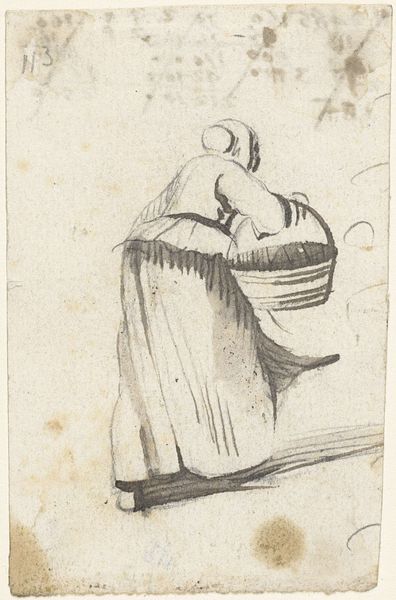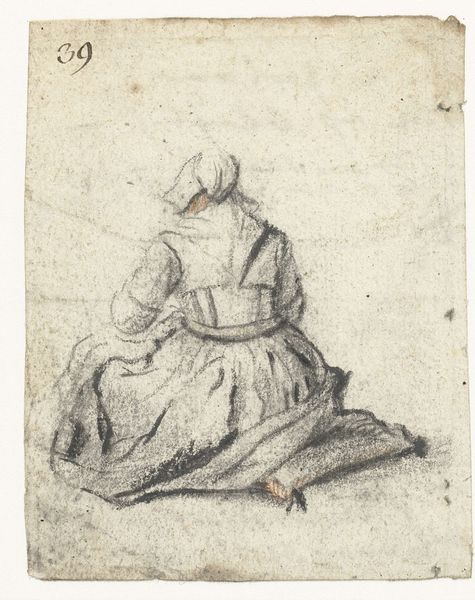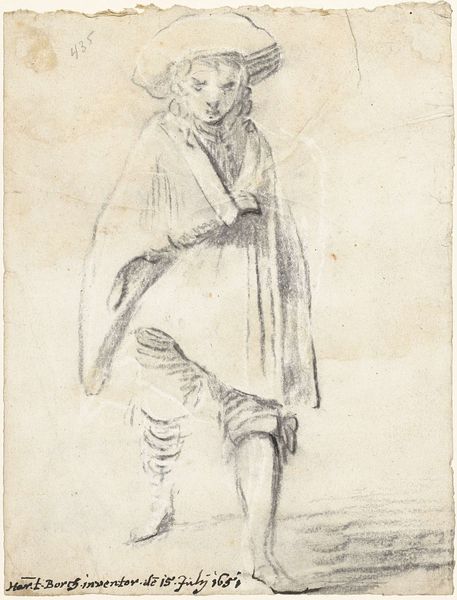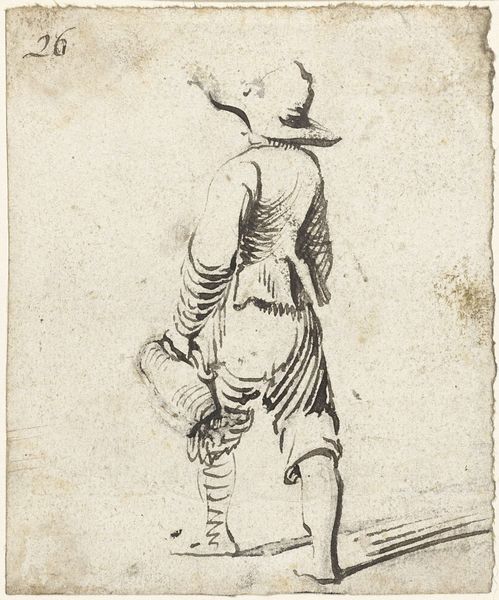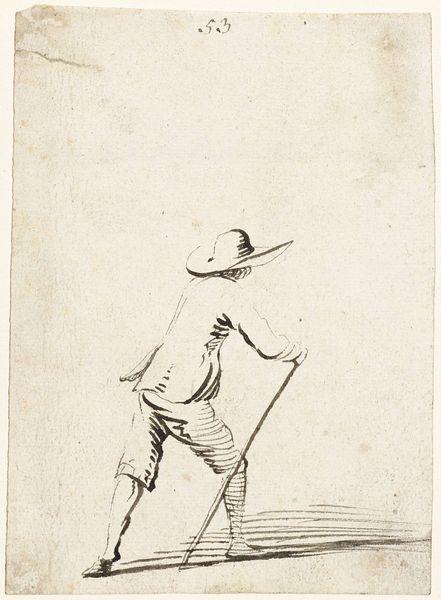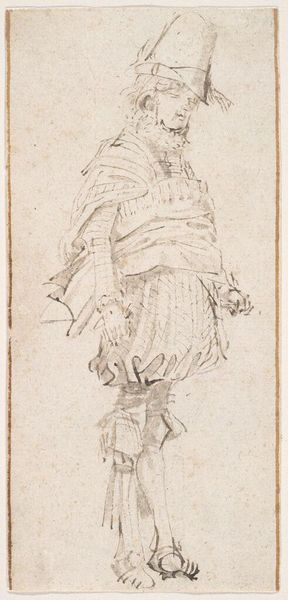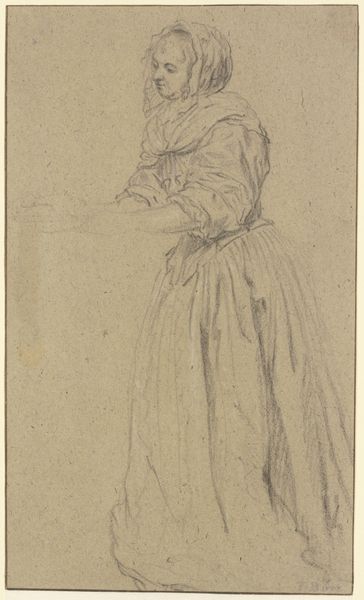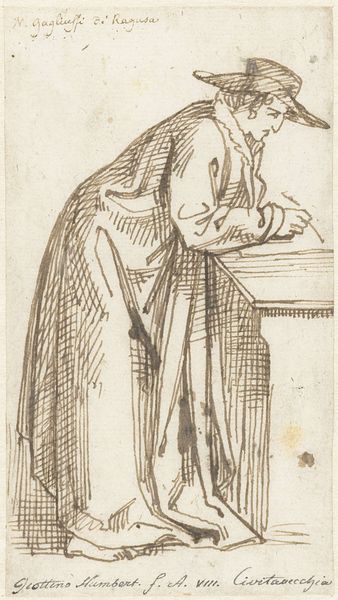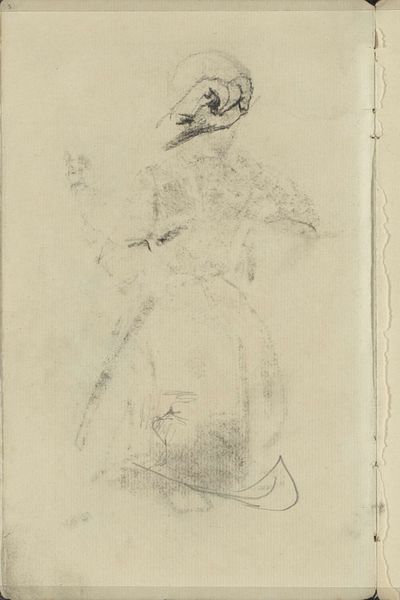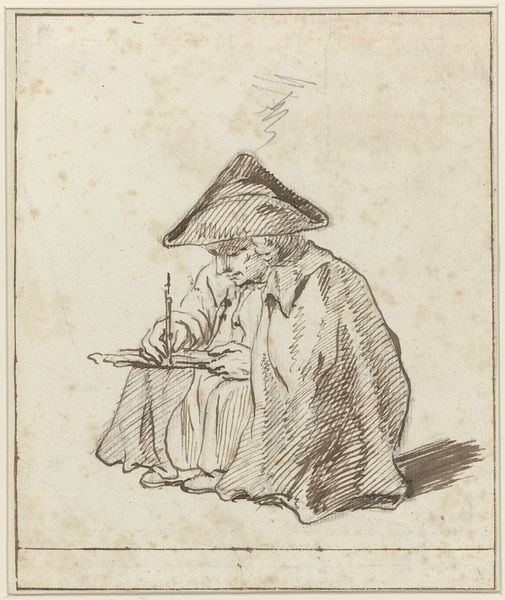
drawing, paper, ink
#
portrait
#
drawing
#
dutch-golden-age
#
landscape
#
figuration
#
paper
#
ink
#
pen-ink sketch
#
line
#
genre-painting
Dimensions: height 103 mm, width 80 mm
Copyright: Rijks Museum: Open Domain
Curator: Here we have "Woman with wool in her hand," attributed to Harmen ter Borch, likely from 1652. It resides here in the Rijksmuseum. Editor: There's a real sense of movement captured with such minimal lines, a fleeting moment, almost like catching a glimpse of someone. The stark contrast between the hatched shadow and the delicate depiction of the figure lends it a very dynamic, graphic quality. Curator: Indeed, Borch's strategic use of ink washes to define form and space is quite sophisticated for what appears, at first glance, to be a simple sketch. Note how the fall of the cloth is indicated, or even the intricate, compressed wool ball is depicted through line thickness and density. The line serves almost as a sculptural tool here. Editor: This piece also tells us something about the status of women and domestic duties in the Dutch Golden Age, doesn't it? It elevates the everyday tasks, turning a mundane chore like carrying wool into a subject worthy of artistic exploration. It certainly contributes to the cultural understanding of this time period. Curator: Quite so. The act of observation itself is the focal point here, isn't it? There are no didactic or allegorical flourishes, it simply shows a figure holding what could be spun or resold by this burgher class. Borch finds value in this almost anonymous depiction. Editor: Yet, there's a certain timelessness. Despite its historical specificity, it still feels very relevant. Curator: I agree. There is something innately attractive about its understated realism. Its focus on the quotidian is what speaks to us now. Editor: Well, examining Borch’s drawing underscores how effective minimalist structure can be. Curator: For me, analyzing this picture truly underlines Borch's mastery over materials in conveying volume with economy.
Comments
No comments
Be the first to comment and join the conversation on the ultimate creative platform.

